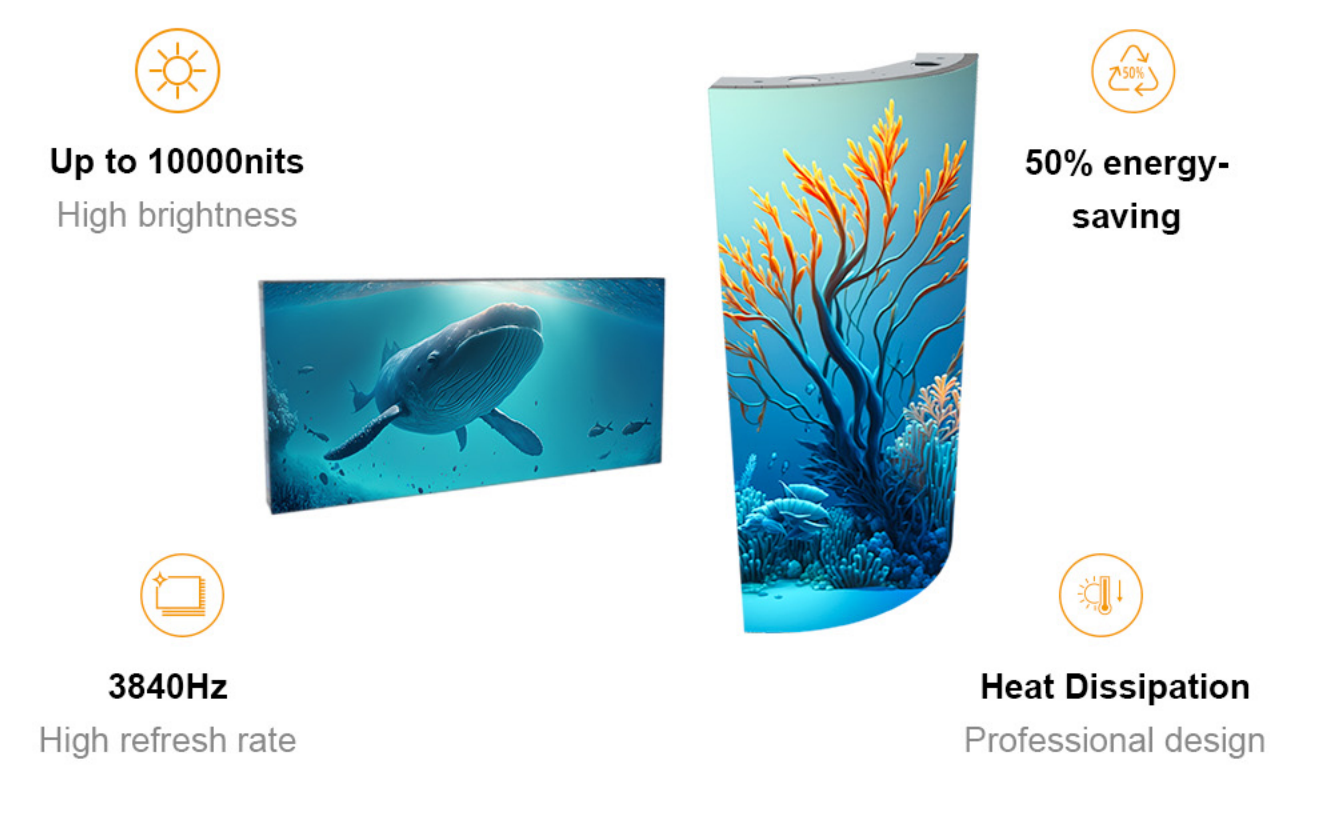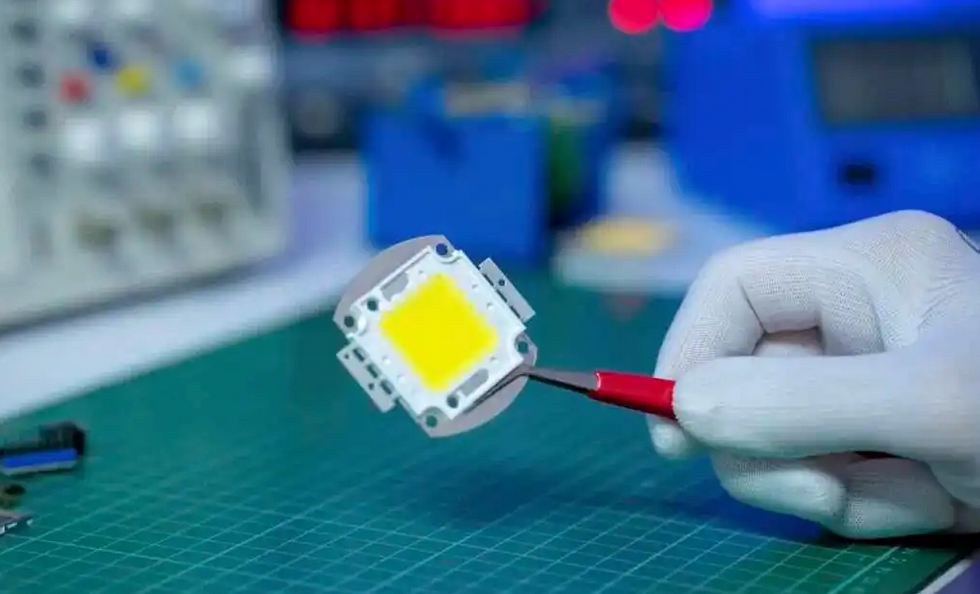LED chip principle knowledge
 LEDdisplay
LEDdisplay
LED technology has gone through a long and glorious development road since the 1960s. From the initial indicator light source to the current wide application in various display devices and lighting fields, LED technology has been constantly innovating and has brought huge economic and social benefits to human society. This article will comprehensively introduce the principles, classifications, types of material epitaxy, and the composition and light-emitting principles of LED chips, providing you with a complete knowledge of LED chip principles.
- Brief History of LED
The development of LED technology began with people's understanding of the luminescence phenomenon of semiconductor materials. In 1962, Nick Holonyak Jr. of General Electric developed the first practical visible light emitting diode (LED). The basic structure of LED is composed of a piece of electroluminescent semiconductor material, placed on a lead frame, and sealed with epoxy resin to make it have good shock resistance. Here is the technical evolution of LED screens.
Initially, LEDs were mainly used as indicator light sources for instruments and meters, but with the development of technology, LEDs of various colors began to be widely used in traffic lights and large-area display screens, greatly improving energy efficiency and service life.
- LED chip principle
LED (Light Emitting Diode), that is, a light-emitting diode, is a solid-state semiconductor device that can directly convert electrical energy into light. The core of the LED is a semiconductor chip, one end of which is attached to a bracket to form a P-N junction. When current passes through the chip, electrons and holes recombine in the P region and emit energy in the form of photons. This is the principle of LED light emission. The color of light is determined by the material that forms the P-N junction.
- Classification of LED chips
LED chips can be classified according to different standards. The following are several common classification methods:
MB chip (Metal Bonding): Using Si with a high heat dissipation coefficient as the substrate, the epitaxial layer and the substrate are bonded by a metal layer, which has good thermal conductivity and light reflection performance. GB chip (Glue Bonding): uses a transparent sapphire substrate to replace the traditional light-absorbing GaAs substrate, improves the light output power, and has excellent pattern diagram and brightness. TS chip (Transparent Structure): has a transparent GaP substrate, does not absorb light, has high brightness, and is widely used. AS chip (Absorbable Structure): Made using MOVPE process, has high brightness, excellent reliability, and is widely used. What is the difference between CSP and COB LED chips?
- Types of LED chip material epitaxy
There are many types of LED chip material epitaxy, mainly including:
LPE (Liquid Phase Epitaxy): Liquid phase epitaxy, used for GaP/GaP materials.
VPE (Vapor Phase Epitaxy): Vapor phase epitaxy, used for GaAsP/GaAs materials. MOVPE (Metal Organic Vapor Phase Epitaxy): Metal Organic Vapor Phase Epitaxy, used for AlGaInP and GaN materials. SH (Single Heterostructure): Single heterostructure, used for GaAlAs/GaAs materials. DH (Double Heterostructure): Double heterostructure, used for GaAlAs/GaAs materials. DDH (Double Heterostructure): Double heterostructure, used for GaAlAs/GaAlAs materials.
- LED chip composition and luminescence
LED chips are mainly composed of arsenic (AS), aluminum (AL), gallium (Ga), indium (IN), phosphorus (P), nitrogen (N), strontium (Si) and other elements. LED chips can be classified according to luminous brightness or constituent elements:
According to luminous brightness: including general brightness, high brightness, ultra-high brightness and invisible light (infrared), etc. According to constituent elements: including binary chips, ternary chips and quaternary chips, etc. How do LED chips emit light?
The development of LED technology continues, and with the continuous advancement of new materials and manufacturing processes, the performance and application range of LED chips will be further expanded. From high-brightness traffic lights to energy-saving lighting equipment, LED technology will continue to bring light and convenience to our lives.
Thank you for watching. I hope we can solve your problems. Sostron is a professional LED display manufacturer. We provide all kinds of displays, display leasing and display solutions around the world. If you want to know: Technical performance of foldable LED advertising screens. Please click read.
Follow me! Take you to know more about led display knowledge.
Contact us on WhatsApp:https://api.whatsapp.com/send?phone=+8613510652873&text=Hello
Subscribe to my newsletter
Read articles from LEDdisplay directly inside your inbox. Subscribe to the newsletter, and don't miss out.
Written by

LEDdisplay
LEDdisplay
Sostron is a professional LED display manufacturer. We provide all kinds of displays, display leasing and display solutions around the world.